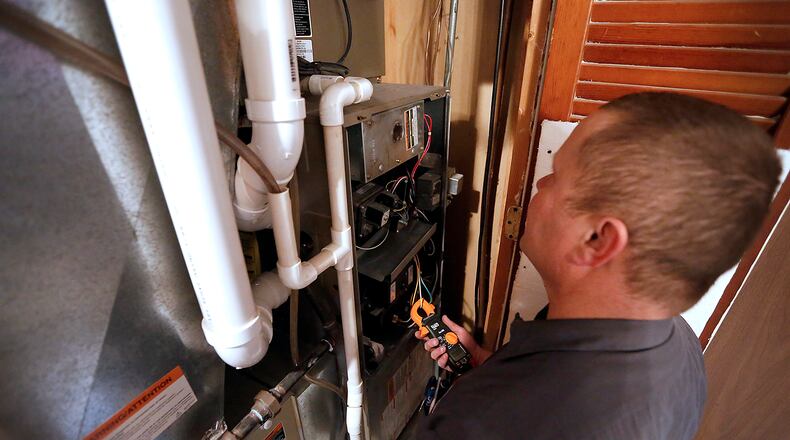MORE: Natural gas rates to fall for some customers
Natural gas prices are expected to remain about the same this winter, Nowinsky said, which is why heating costs shouldn’t go up too high. But a colder winter could push prices a little higher, she said.
“Last winter was substantially warmer than normal,” she said. “This year if we experience more normal weather conditions, we estimate the market prices for natural gas will be similar to a previous winter or just slightly higher.”
Columbia Gas projections take into account market forecasts, supply trends and storage levels, Nowinsky said, and are based on normal weather projections.
“If temperatures are colder or warmer than normal, usage amounts and bills could differ,” she said.
READ: Columbia Gas starts $3.4M line replacement in Springfield
The company has about 39,000 customers overall in Clark County and about 5,400 in Champaign County. Bills still vary for each customer, depending on issues like historical gas usage patterns, the projected cost of natural gas on the wholesale market, and rates for service and delivery.
Stormcenter 7 Chief Meteorologist Eric Elwell said predicting how cold it’s going to be this winter can get tricky because it will be a La Nina winter.
“Basically it adds a bit of an interesting element to the forecast as it typically means a more active weather pattern,” he said. “Typically this can mean a wet winter but one that is slightly milder than average from the Ohio River Valley to the Gulf Coast. We are sort of on the edge here, meaning our winter could be more ‘typical’ or just average to slightly above normal.”
The last two winters in Springfield have been more mild than normal, Elwell said. So even though this might be a mild La Nina winter, he said it might be perceived as harsher than usual.
“A normal winter will seem cold and likely will mean utility bills that are higher than the last two years,” he said.
PREVIOUSLY: $4.9M in upgrades planned for Springfield gas lines this summer
Customers can take steps to keep their heating costs down this winter, Nowinsky said. Regardless of how far behind a customer is, they can get their heat turned back on by paying at least $175, she said.
Columbia Gas also offers payment plans that allow households to pay for heating bills throughout the year instead of paying by the month.
Other tips Columbia Gas gives customers to keep costs lower include turning down water heater’s temperature to 120 degrees and wash clothes in cold water when possible. More tips can be found at the company’s website, ColumbiaGasOhio.com.
When heating bills go up, it effects the pocketbook, Springfield resident Renee Griffin said. However she’s willing to take the risk when winter rolls around.
“I turn my heat on as soon as it gets cold,” she said. “I don’t like the cold.”
She also has an obligation to her family to turn on the heat, she said, and it’s not right to let kids live in a cold home.
If anyone is in need of help this winter, Griffin said resources are out there to help Clark County residents in a bind.
“They can make a (Home Energy Assistance Program) appointment or they can go to St. Vincent DePaul, they help with heating and bills and stuff like that,” she said.
By the numbers
$534: expected cost of the average Columbia Gas customer household for this October through March.
$533.84: Average heating bill paid by Columbia Gas customers last winter.
39,000: Columbia Gas customers in Clark County
5,400: Columbia Gas customers in Champaign County
Unmatched Coverage
The Springfield News-Sun provides in-depth coverage of issues that affect your pocketbooks, including tax increases and gasoline prices.
About the Author
